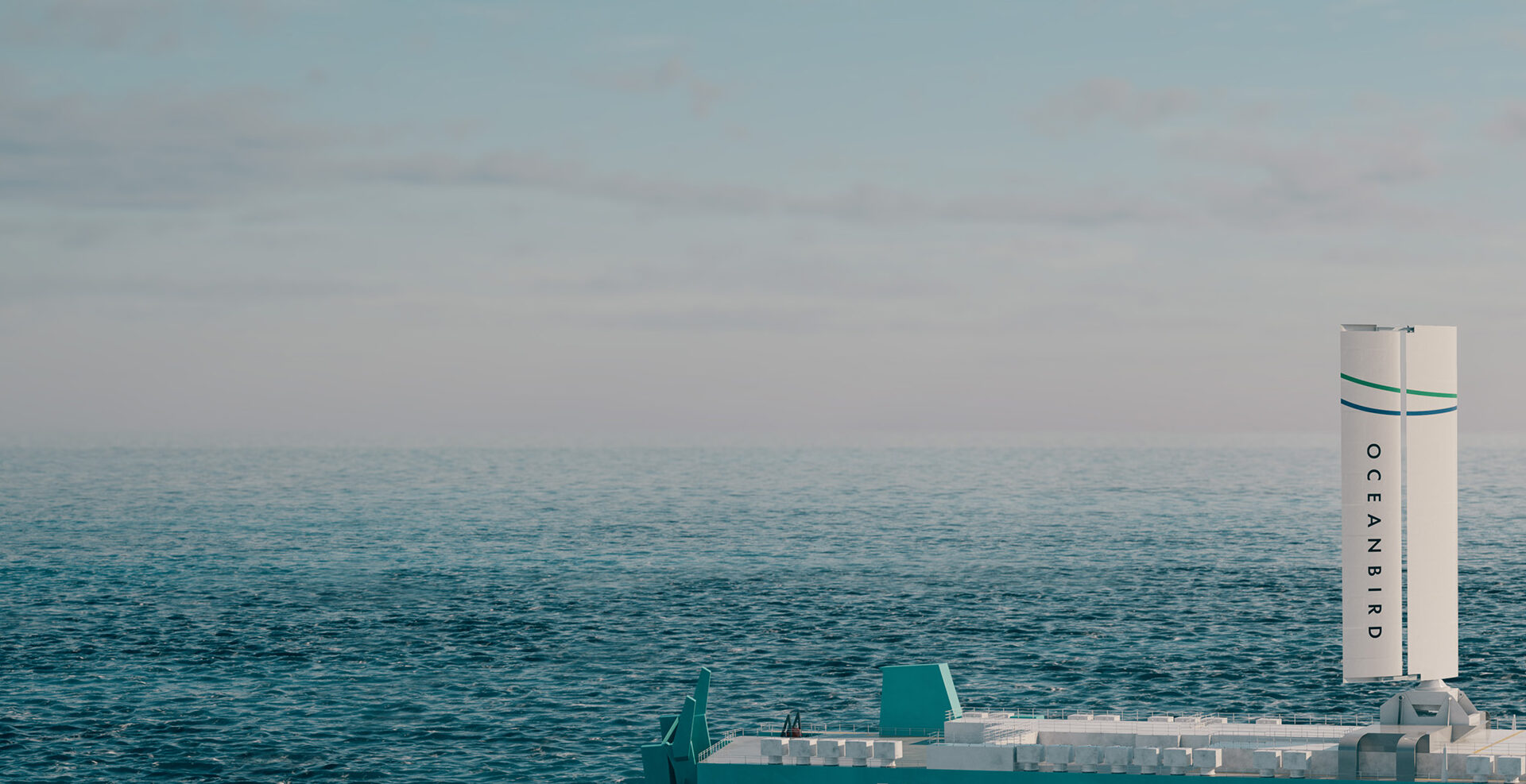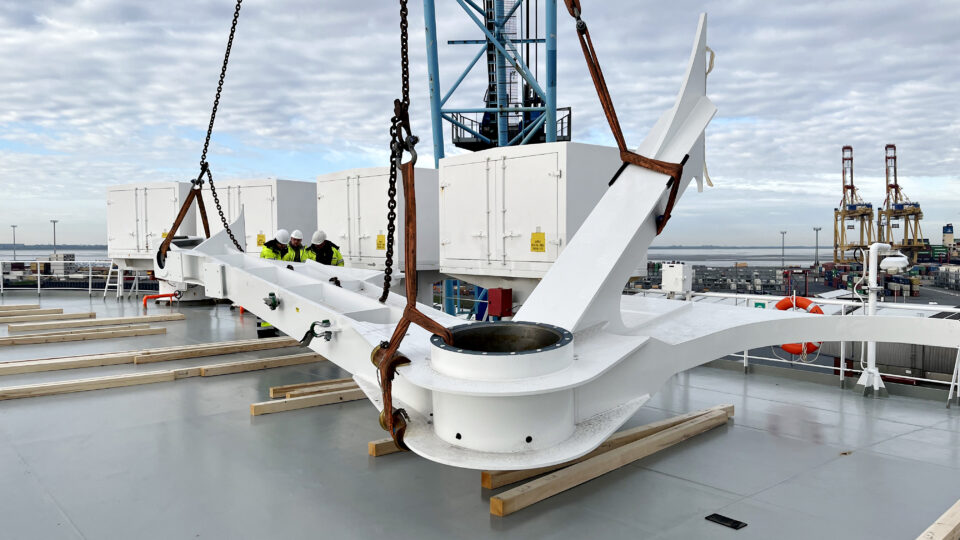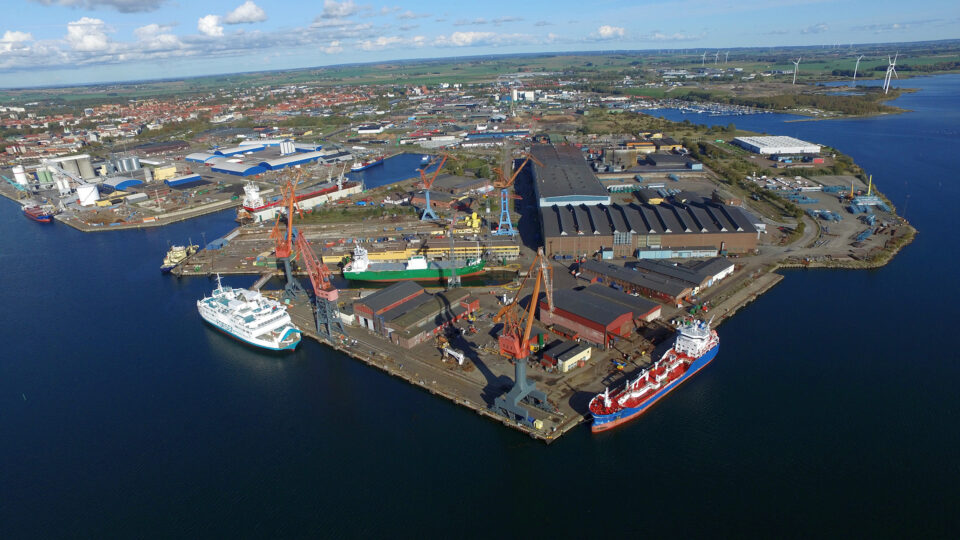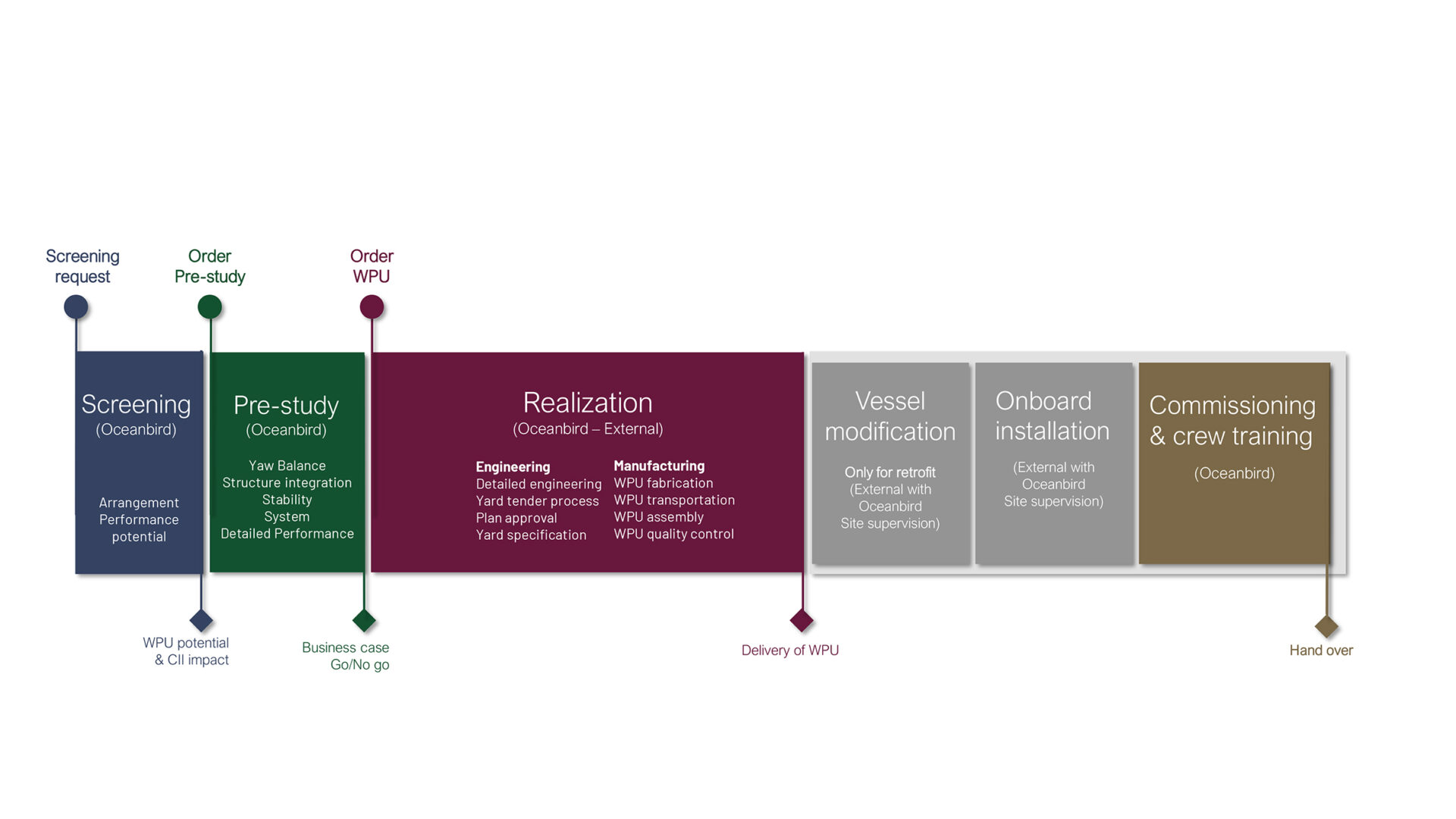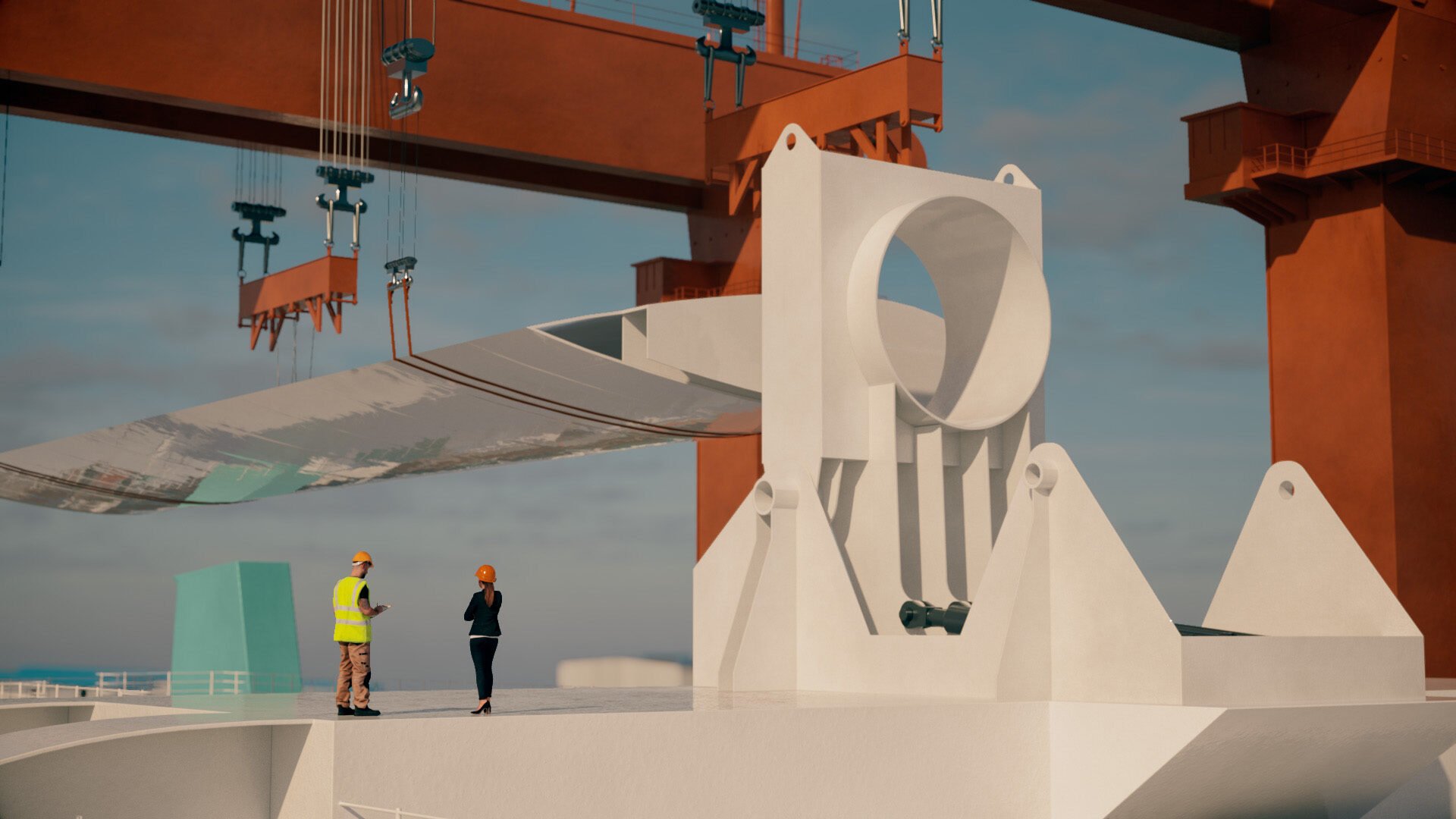Step 1
Screening
Selecting the vessel
First step is selecting an appropriate vessel in the existing fleet or the newbuilding program. A bigger vessel means more stability, and we also look at average speed and age. The wing sail can be moved and used on another vessel after re-cycling, but you might not want to do extensive steel strengthening in the hull if re-cycling is just a few years away. On the other hand, it can be a way to avoid stranded assets by keeping an older vessel in operation instead of sending it to re-cycling too soon. If a vessel has an upcoming dry-docking, that could be a good opportunity to install a wind-assisted propulsion system.
Analyzing the route
Oceanbird´s performance analytics team investigate the wind conditions along the route. They look into the wind speed and direction, and then make a diagram to visualize the conditions for that specific route. It could be a good idea to dedicate a vessel with wind propulsion to a favorable route, but it can also work in a global system.

